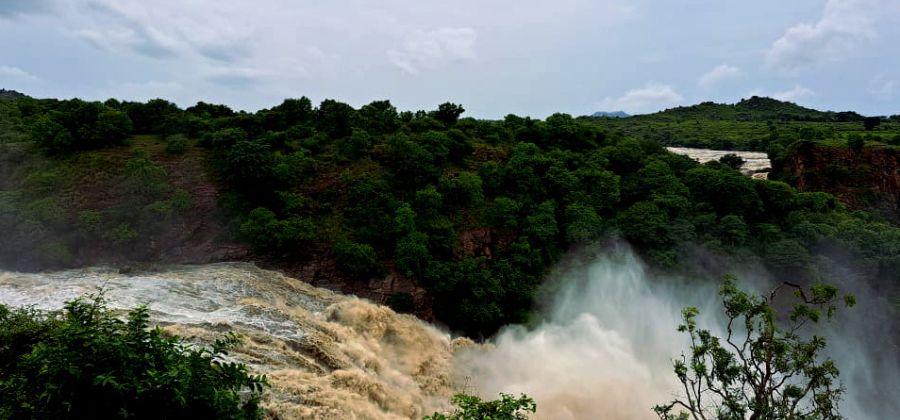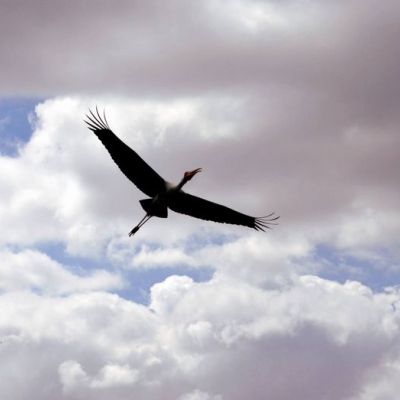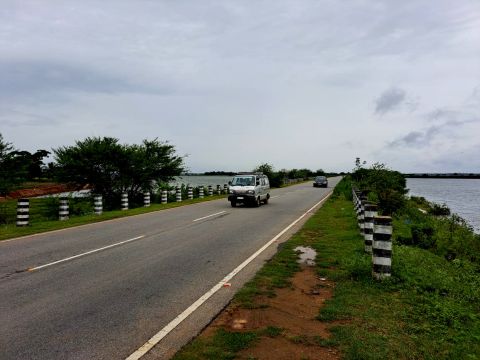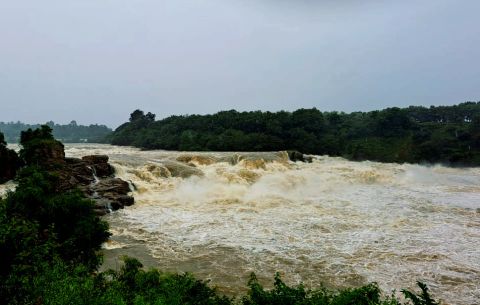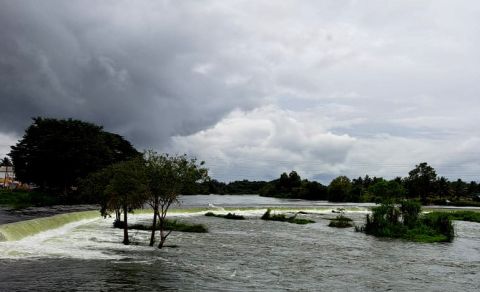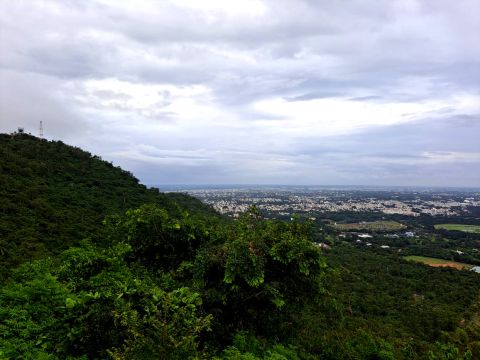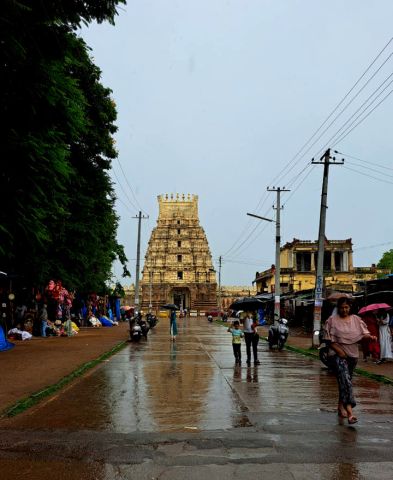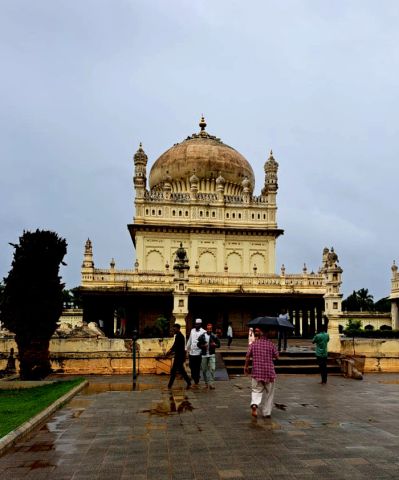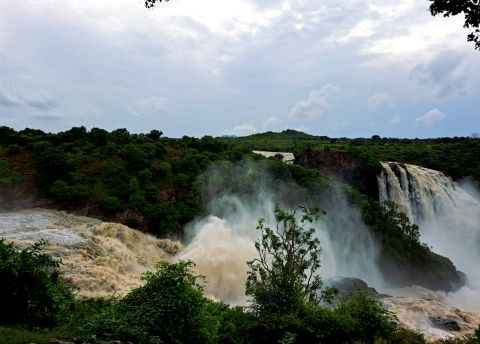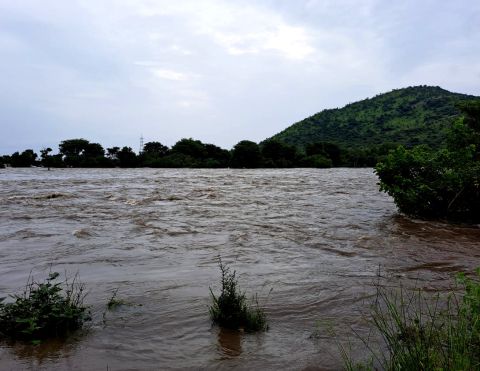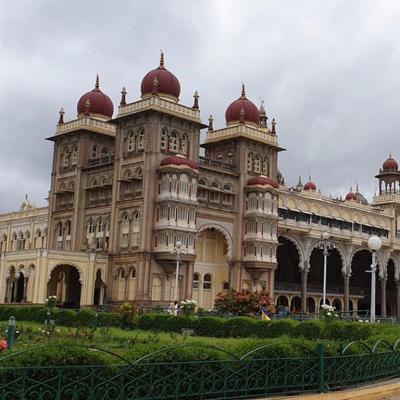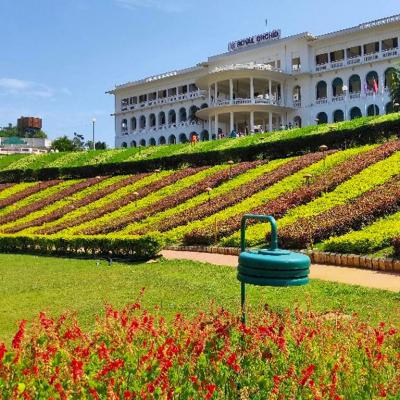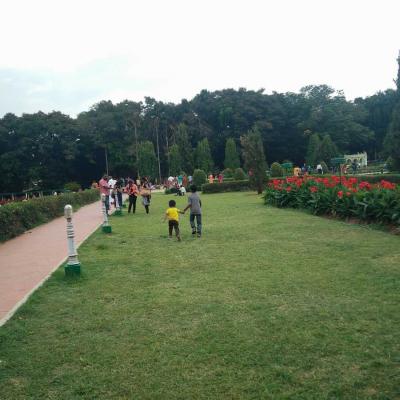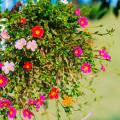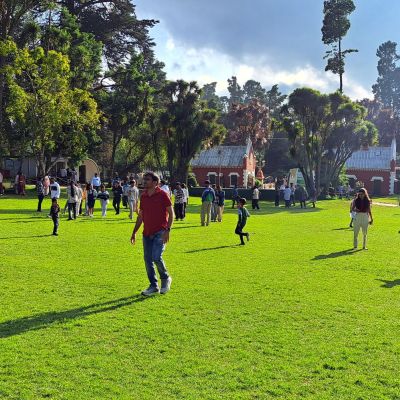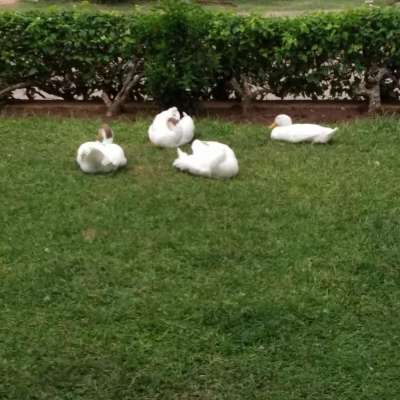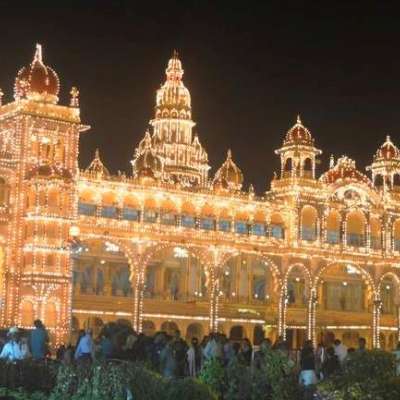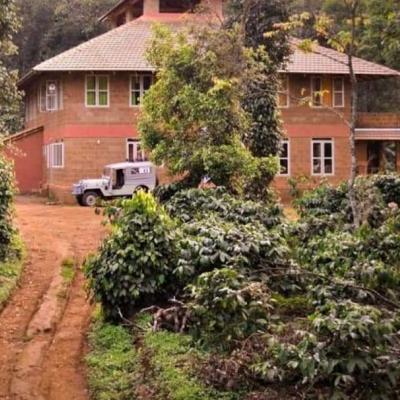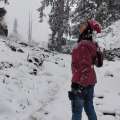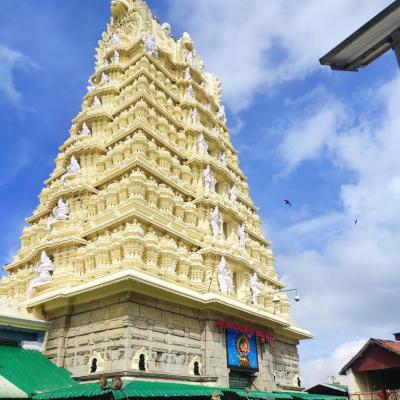Best of Monsoon
An adventurous monsoon trip where we explored lush landscapes, witnessed the enchanting beauty of nature, and got drenched in refreshing raindrops.
An experience that compelled me to realize that the monsoon is not just for listening to the gloomy sound of rain while sitting in a cozy room. The monsoon offers us the opportunity to experience the violent roar and breathtaking view of gushing waterfalls. This trip experience will always inspire me to pack my bags for an amazing waterfall adventure during rainy season for the rest of my life.
It was a trip to Mysore, upon the special request of my mother-in-law. Nobody was excited about going to Mysore as all the members of the trip had been there many times, except for my mother-in-law. She had visited Mysore only once and that too many years ago. Eventually, we planned a 2-night and 3-day trip with unanimous agreement.
We booked a car for 2 nights and 3 days, and the tour started in the afternoon from Bangalore. We had our evening snack at the Shivalli restaurant in Channapatna and reached Mysore at around 7 PM. The ladies in our group had initially planned to go shopping for some handicraft items from Mysore. However, due to continuous dripping rain, we could not go out.
Although the hotel provided complimentary breakfast, we decided to have our breakfast at Ashirvad Grand. Our second-day itinerary included visits to Chunchanakatte falls, Balmuri falls, and Chamundi hills. We set off for our first destination; Chunchanakatte falls, which was approximately 50 km away from our hotel. As we travelled halfway towards the falls, we saw a river flowing on both sides of the road. We assumed it was the Kaveri River, the Ganges of the South. We checked the map and confirmed our assumption. We stopped at the place, which was not a tourist spot but rather a small village on the banks of the Kaveri River. It reminded us that experiencing the serenity of nature doesn't always require mountains, waterfalls, forests, or oceans. The simple beauty of nature is enough to provide us with a sense of peace.
When we arrived at Chunchanakatte falls, it was raining heavily. It is a famous waterfall in the Western Ghats, formed on the course of the Kaveri River. It is a must-visit tourist destination during the monsoon season. In the Chunchanakatte village, the Kaveri River falls in two cascades from a height of around 65 feet. Adjacent to this splendid waterfall is the Lord Kodanda Rama Temple. According to mythology, the tribal couple Chuncha and Chunchi offered hospitality to Lord Rama during his 14-year tenure in the forests. An interesting fact about the temple is that the sound of the gushing water is audible from everywhere except the 'garbhagriha' of the temple. There is a tale that Lord Rama, irritated by his wife Sita's repeated complaints and cursed that women should not make noise pollution with their useless conversations. As the Kaveri River is considered female, it was affected by the curse, which prevents the roaring sound of the waterfall from reaching the 'garbhagriha.' After hearing this story, I couldn't help but wonder if Lord Rama was able to put an end to Sita's continuous complaints with the curse.
Drenched by the heavy rain, we arrived at the site. I felt terrified when I realized the consequences of standing at the same spot where I had enjoyed the falls during winter. I descended the stairs and approached the waterfall during my first visit to Chunchanakatte in winter. This time, anything that fell into the path of the beautiful but loud and ferocious waterfall was being engulfed by its strong current. It made me realize how even the most stunning natural phenomena can sometimes be dangerous.
On our way back from Chunchanakatte, we had lunch at another outlet of Ashirvad Grand restaurant. We were impressed by the taste of the South Indian and North Indian dishes, the service, and the cleanliness of the dining hall of the restaurant. Our next destination was Balamuri Falls, which took around half an hour to reach from the restaurant.
Balmuri Falls is a man-made 6-foot reservoir dam that slows down the flow of the Kaveri River. In Kannada, "Balmuri" refers to Lord Ganesha, whose trunk is curved to the right side. The name signifies that the Kaveri River diverts to the right side from the dam. The surrounding paddy fields, the village, and the tall green coconut and palm trees make this spot truly panoramic. It is a popular picnic spot, but I believe that our enjoyment should not come at the cost of harming nature. It is our duty to keep the place clean and respect the nature.
Our last destination on the second day of our Mysore trip was Chamundi Hills. It took about an hour to reach the top of Chamundi Hills from Balamuri Falls. The Chamundeshwari Temple, situated on the hilltop, is open from 7:30 am to 9:00 pm every day, except during lunchtime. According to mythology, the goddess of this temple, Chamundeshwari, defeated the king of the city, Mahishasura. The name of the city, Mysore, is derived from the word 'Mahishooru,' which means the village of Mahishasura.
My mother-in-law became nostalgic as we ascended the hill. She had visited this place with my husband when he was around 2 years old. She was upset to see the transformation of the temple complex. It had completely changed. The hilltop had been transformed into a shopping street and was very crowded. The serene nature of the hill had been lost amidst the large parking spaces, buildings, and bustling shopping area. After spending some time there, we returned to the hotel.
We had dinner at the hotel, reminiscing and discussing the moments of the day at the dinner table. We also planned our itinerary for day 3 during dinner. We decided to visit Srirangapatna, an island steeped in history, and Shivanasamudra, an alluring waterfall surrounded by green mountains.
On day 3, we checked out from the hotel and had breakfast again at Ashirvad Grand restaurant. We then began our journey towards the capital city of the Tiger of Mysore, Tipu Sultan.
The contribution of Tipu Sultan towards technological and economic advancement is unforgettable. The South Indian kingdom of Mysore, under his reign, became India's dominant economic power with high-yielding agriculture and textile production.
Karnataka is the number one silk manufacturing state in India, and more recently, the Karnataka Silk Industries Corporation (KSIC) earned a record profit of 31.64 crore by selling the finest Mysore silk sarees (as reported in The Hindu). This is one of the indelible imprints of Tipu Sultan on the prevailing economy of the state. He pioneered the establishment of the Mysore silk industry by sending an expert to Bengal Subah, the largest subdivision of Mughal India, to learn silk cultivation and processing technology from them.
Tipu Sultan was also a connoisseur of arts and crafts. He brought artisans from Persia to train Indian craftsmen. During that period, the unique wooden toys from a small town called Channapatna, near Mysore, flourished with patronage from Tipu Sultan.
Our first stop in Srirangapatna was the place where Tipu Sultan was killed by the British due to the betrayal of his ministers who were working for the British. Despite advice from French military personnel to escape when the British attacked with soldiers double the size of Tipu Sultan's army, the warrior Sultan did not run away and died while defending his Srirangapatna fort.
We then visited Sri Ranganathaswamy Temple, located inside the Srirangapatna fort. The temple of the god Ranganatha, a manifestation of god Vishnu, contains an inscription from the Hoysala dynasty and a tower with Vijayanagar architecture at the entrance.
The next two places of interest for me in Srirangapatna were Dariya Daulat Palace and Gumbaz. Dariya Daulat Palace, Tipu Sultan's summer palace, is situated in the 'Garden of the Sea of Wealth,' Dariya Daulat Bagh. It is a wooden palace with intricate interiors and houses a museum with a collection of Tipu Sultan's belongings. The museum also showcases beautiful European and Persian paintings and manuscripts, depicting the durbar of different rulers during Tipu Sultan's reign.
During my first visit to Srirangapatna, I understood the reason behind the name 'summer palace.' It was a hot sunny day in summer, and I could feel the temperature difference between the outside and inside of the palace.
Gumbaz, a mausoleum built by Tipu Sultan, houses the tombs of his father, Hyder Ali, and mother, Fakr-Un-Nisa. Although Gumbaz was not built for Tipu Sultan's own burial, he was eventually buried next to his parents after his untimely death in 1799. Many of Tipu Sultan's relatives were also buried in the garden outside the Gumbaz. A mosque was also built adjacent to the mausoleum. Gumbaz, built in Persian-style architecture, bears a resemblance to the Qutb Shahi tomb in Golconda. The martyrdom of the 'martyr of Srirangapatna,' who fought against 56,000 countrymen, soldiers of British East India Company, along with traitors from his own ministry, is elaborated in Persian script at the entrance of the Gumbaz.
As it started raining, my fellow tourmates, including my 3 year old son, had already left the place. However, I wanted to spend some time at Gumbaz, as it was a tranquil place with only the sound of the afternoon namaz.
We then had lunch near Gumbaz before heading towards the last destination of our tour, Shivanasamudra.
Shivanasamudra is an island on the banks of the Kaveri River. The Kaveri River divides into two parts on this island, forming two waterfalls, Gaganachukki and Bharachukki, which cascade from hillocks surrounded by lush green forests. Asia's first hydroelectric power station is located at the Shivanasamudra waterfall.
We were originally heading towards Bharachukki Waterfall because we knew that the view of the Shivanasamudra falls, descending from the hill forest of the Kaveri Wildlife Sanctuary, is breathtaking from Bharachukki view point. However, when we arrived, the security checkpoint gate leading to Bharachukki Waterfalls was already closed. The falls are open to the public from 6 am to 6 pm. So, we went to Gaganachukki Falls instead.
On our way back, we noticed the Kaveri River flowing next to the road. We decided to stop and went to the riverbank. We ended our monsoon trip with a view of the brimming Kaveri River surrounded by verdant hills.
We left nature, carrying the pleasant scent of moist earth, leaves, and grass, and returned to our civilized society, where we were greeted by the smell of damp concrete. I always have hope that I will find something fun to do, no matter what the new day and new place bring.


